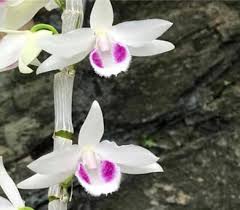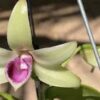# Choosing the Right Pot for Phalaenopsis Orchids: A Comprehensive Guide

## Table of Contents
1. **Introduction**
2. **Understanding Phalaenopsis Orchids**
– 2.1. Basic Characteristics
– 2.2. Growing Requirements
3. **The Importance of Choosing the Right Pot**
4. **Types of Pots for Phalaenopsis Orchids**
– 4.1. Plastic Pots
– 4.2. Clay Pots
– 4.3. Mesh or Net Pots
– 4.4. Decorative Pots
5. **Factors to Consider When Choosing a Pot**
– 5.1. Size of the Pot
– 5.2. Drainage
– 5.3. Material of the Pot
– 5.4. Shape of the Pot
6. **Potting Mixes for Phalaenopsis Orchids**
– 6.1. Common Ingredients
– 6.2. Customizing Your Potting Mix
7. **Repotting Your Phalaenopsis Orchid**
– 7.1. Signs It’s Time to Repot
– 7.2. Step-by-Step Repotting Guide
8. **Maintaining the Right Potting Environment**
– 8.1. Watering Practices
– 8.2. Fertilization
9. **Conclusion**
10. **FAQs**
—
## 1. Introduction
Phalaenopsis orchids, commonly known as moth orchids, are cherished for their stunning blooms and ease of care. While many gardeners focus on providing the right light, temperature, and humidity, selecting the right pot is equally crucial for their growth and overall health. This guide will explore how to choose the most suitable pot for your Phalaenopsis orchids, ensuring they thrive in your care.
—
## 2. Understanding Phalaenopsis Orchids
### 2.1. Basic Characteristics
Phalaenopsis orchids are known for their distinctive, flat, and broad flower petals that resemble moths in flight. These orchids typically bloom once or twice a year, with flowers lasting several months. Native to Southeast Asia, Phalaenopsis orchids are epiphytic, meaning they naturally grow on trees and derive moisture and nutrients from the air, rain, and debris accumulating around them.
### 2.2. Growing Requirements
To thrive, Phalaenopsis orchids need specific conditions:
– **Light**: Bright, indirect light is ideal. Direct sunlight can scorch their leaves.
– **Temperature**: They prefer temperatures between 65°F and 75°F (18°C to 24°C) during the day and slightly cooler at night.
– **Humidity**: A humidity level of 50% to 70% is optimal for growth.
By understanding these requirements, you can create an ideal environment for your orchids, starting with the right pot.
—
## 3. The Importance of Choosing the Right Pot
Choosing the right pot for your Phalaenopsis orchid is crucial for several reasons:
1. **Root Health**: Orchids have unique root systems that require adequate air circulation and drainage. The right pot will facilitate these needs.
2. **Growth and Stability**: A well-chosen pot will support the orchid as it grows, allowing for healthy root expansion and preventing tipping or toppling.
3. **Water Management**: The pot’s design and material will influence how quickly the potting mix dries out, which is critical for orchid health.
4. **Aesthetic Appeal**: The right pot can enhance the beauty of your orchid and complement your home decor.
—
## 4. Types of Pots for Phalaenopsis Orchids
### 4.1. Plastic Pots
Plastic pots are lightweight and often come with drainage holes, making them a popular choice among orchid enthusiasts. They retain moisture better than other materials, which can be beneficial in dry environments. However, they can lead to overwatering if the potting mix does not dry out quickly enough.
### 4.2. Clay Pots
Clay pots are porous, allowing for excellent air circulation and moisture evaporation. This feature helps prevent overwatering, making clay pots suitable for Phalaenopsis orchids. However, they can be heavy and may break more easily than plastic pots.
### 4.3. Mesh or Net Pots
Mesh or net pots are designed specifically for orchids, providing maximum air circulation around the roots. These pots allow for rapid drainage and drying of the potting medium, reducing the risk of rot. They are ideal for Phalaenopsis orchids, especially if combined with a well-draining potting mix.
### 4.4. Decorative Pots
Decorative pots can add an aesthetic touch to your orchid display but should always include a drainage mechanism. If you choose a decorative pot without drainage holes, consider placing your orchid in a plastic or mesh pot inside the decorative one to ensure proper drainage.
—
## 5. Factors to Consider When Choosing a Pot
### 5.1. Size of the Pot
The size of the pot is crucial for the health of your Phalaenopsis orchid. Here are some guidelines to follow:
– **Young Plants**: Choose a smaller pot that allows for growth without too much excess space, which can retain water and lead to root rot.
– **Mature Plants**: A pot that is 1-2 inches (2.5-5 cm) wider than the current pot is usually ideal for repotting mature orchids.
### 5.2. Drainage
Drainage is critical for orchid health. Always choose pots with adequate drainage holes. If the pot does not have holes, the risk of water pooling at the bottom increases, leading to root rot.
### 5.3. Material of the Pot
The pot’s material can affect moisture retention and air circulation. Choose pots made from breathable materials, like clay or mesh, to ensure healthy root development.
### 5.4. Shape of the Pot
Phalaenopsis orchids have wide, shallow root systems. Therefore, pots that are wider than they are deep are usually more suitable. This shape provides ample surface area for root growth and adequate drainage.
—
## 6. Potting Mixes for Phalaenopsis Orchids
### 6.1. Common Ingredients
The potting mix you choose is as important as the pot itself. Phalaenopsis orchids thrive in a well-draining medium that mimics their natural growing conditions. Common ingredients for orchid potting mixes include:
– **Bark Chips**: Provide aeration and drainage.
– **Sphagnum Moss**: Retains moisture without becoming waterlogged.
– **Perlite**: Enhances drainage and aeration.
– **Charcoal**: Improves drainage and helps absorb impurities.
### 6.2. Customizing Your Potting Mix
You can customize your potting mix based on your specific growing conditions:
– For drier environments, increase the amount of sphagnum moss.
– In humid conditions, add more perlite or bark chips for better drainage.
—
## 7. Repotting Your Phalaenopsis Orchid
### 7.1. Signs It’s Time to Repot
Repotting is essential for the health of your orchid. Here are some signs that it’s time to repot:
– **Root Growth**: Roots are growing out of the drainage holes.
– **Potting Mix Decomposition**: The potting medium appears broken down or compacted.
– **Plant Size**: The orchid has outgrown its pot and appears top-heavy.
### 7.2. Step-by-Step Repotting Guide
1. **Gather Materials**: Prepare your new pot, fresh potting mix, and pruning shears.
2. **Remove the Orchid**: Gently take the orchid out of its current pot, taking care not to damage the roots.
3. **Inspect the Roots**: Trim any dead or rotting roots using clean, sharp scissors.
4. **Place in New Pot**: Position the orchid in the center of the new pot, adding fresh potting mix around the roots.
5. **Water Thoroughly**: After potting, water the orchid to settle the mix and provide moisture.
—
## 8. Maintaining the Right Potting Environment
### 8.1. Watering Practices
Proper watering is essential for the health of Phalaenopsis orchids. Watering should be done thoroughly but infrequently:
– **Check Moisture Levels**: Stick your finger into the potting mix to determine moisture levels. If it feels dry, it’s time to water.
– **Watering Method**: Water the orchid until excess water drains out of the bottom, ensuring even moisture distribution.
### 8.2. Fertilization
Fertilizing your orchid regularly will support healthy growth:
– **Use Orchid-Specific Fertilizer**: Choose a balanced fertilizer designed for orchids.
– **Dilution**: Always dilute the fertilizer to half-strength to avoid nutrient burn.
—
## 9. Conclusion
Choosing the right pot for your Phalaenopsis orchid is crucial for its health and longevity. Consider factors such as pot size, material, drainage, and shape to create an ideal environment for your orchid to thrive. Additionally, understanding potting mixes and proper maintenance practices will further enhance your orchid’s growth and flowering potential.
By investing the time to select the right pot and care for your Phalaenopsis orchid properly, you can enjoy the beauty of these remarkable plants for years to come.
—
## 10. FAQs
**1. Can I use any pot for my Phalaenopsis orchid?**
Not all pots are suitable. It’s important to choose pots with good drainage and suitable material to promote healthy growth.
**2. How often should I repot my Phalaenopsis orchid?**
Typically, Phalaenopsis orchids should
be repotted every 1-2 years, or when they outgrow their current pot.
**3. Can I use a pot without drainage holes?**
While you can use decorative pots without drainage holes, it’s best to place the orchid in a plastic or mesh pot that has holes to ensure proper drainage.
**4. What type of potting mix should I use?**
A well-draining potting mix that includes ingredients like bark chips, sphagnum moss, perlite, and charcoal is ideal for Phalaenopsis orchids.
**5. How do I know if my orchid needs more water?**
Check the potting mix by sticking your finger in it. If it feels dry a couple of inches down, it’s time to water.
—
This comprehensive guide aims to equip you with the knowledge needed to select the best pot for your Phalaenopsis orchids, ensuring they flourish and add beauty to your home. Happy growing!

